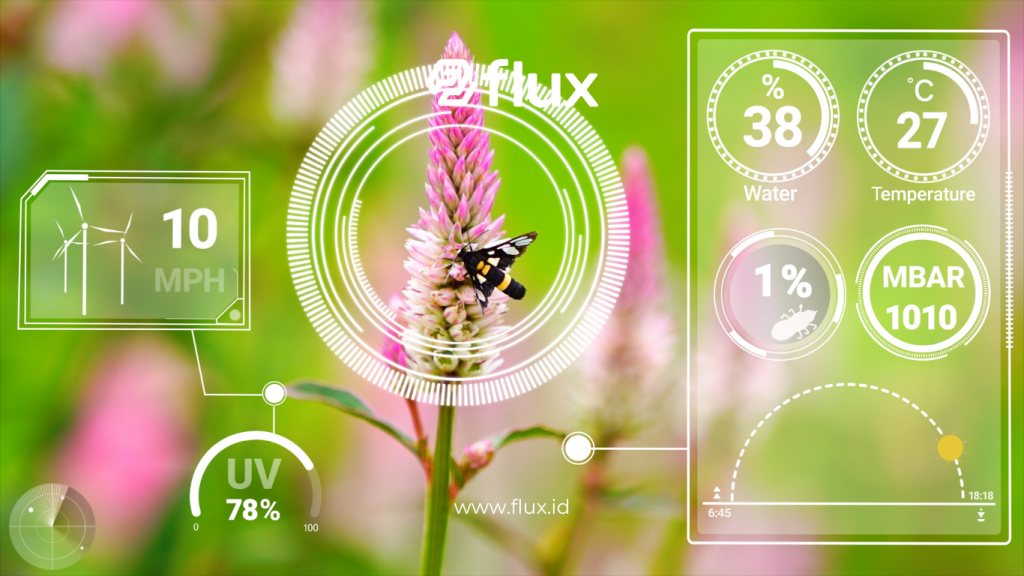Don't miss our holiday offer - 20% OFF!
In modern agriculture, technology plays a crucial role in enhancing efficiency and productivity. One widely used technology is ultrasonic sensors for water level measurement. These sensors help farmers monitor water levels in real-time, which is vital for irrigation management and ensuring crops receive the optimal amount of water. This article discusses how ultrasonic sensors work, their technological principles, and various applications in agriculture.
Contents
What Are Ultrasonic Sensors?

Read More: Water Level Sensors: An Efficient Solution for Tank Management
Ultrasonic sensors are devices that use sound waves at ultrasonic frequencies (beyond the range of human hearing) to detect objects or measure distance. These sensors find application in various industries, including automotive, medical, and agriculture, due to their reliable ability to measure distance with high accuracy.
Working Principle of Ultrasonic Sensors
- Sound Wave Transmission: The ultrasonic sensor emits sound waves towards the object or surface to be measured. In the context of water level measurement, these waves direct towards the water surface.
- Receiving Echo Signal: After reaching the water surface, the sound waves reflect back to the sensor. The time taken for the echo signal to return is known as the time of flight.
- Distance Calculation: The sensor calculates the distance between itself and the water surface based on the time taken for the echo signal. The quicker the echo returns, the closer the water surface is to the sensor.
Technology Behind Ultrasonic Sensors

Read More: How Water Quality Sensors Work: Enhancing Irrigation Management and Plant Health in Agriculture
Ultrasonic sensors utilize transducer technology, which converts electrical energy into sound waves and vice versa. There are two types of transducers in ultrasonic sensors:
- Transmitter: This part emits ultrasonic sound waves towards the object.
- Receiver: This component receives the sound waves that reflect back from the object.
Additionally, ultrasonic sensors include microprocessors that analyze the received signals and calculate distance or height.
Applications of Ultrasonic Sensors in Agriculture

Read More: IoT Sensor Technology in Agriculture: How to Efficiently Monitor Plant Health and Soil Conditions
Farmers can reap several benefits from using ultrasonic sensors for water level measurement, including:
1. Automated Irrigation Management
Farmers can monitor water levels in tanks or irrigation reservoirs using ultrasonic sensors. This information enables automatic irrigation systems to adjust the amount of water delivered to crops based on the detected water height, thus optimizing water usage.
2. Flood Detection in Agricultural Land
Farmers can also use ultrasonic sensors to detect flooding or excessive water accumulation in agricultural fields. This system helps farmers take preventive measures, such as adjusting irrigation flow or managing drainage to avoid crop damage.
3. Water Level Monitoring in Canals and Ditches
Monitoring water levels in canals and ditches proves essential for managing water distribution in agricultural land. Ultrasonic sensors provide real-time data on water level changes, assisting in decision-making regarding water management.
4. Applications in Hydroponics and Aquaponics Systems
In modern agricultural systems such as hydroponics and aquaponics, ultrasonic sensors play a crucial role in monitoring water or nutrient solution levels. This monitoring ensures optimal growth conditions for crops.
Advantages of Ultrasonic Sensors for Water Level

Using ultrasonic sensors in agriculture offers several advantages, including:
- High Accuracy: Ultrasonic sensors provide very accurate measurements, even in varying environmental conditions.
- Unaffected by Light and Color: Unlike optical sensors, ultrasonic sensors remain unaffected by light, dust, or water color, providing consistent results.
- Easily Integrated with Automation Systems: These sensors integrate easily with automated control systems, such as smart irrigation systems, further enhancing water management efficiency.
- Durability in Various Conditions: Ultrasonic sensors are designed to withstand harsh environmental conditions, including high humidity, extreme temperatures, and chemical exposure.
Challenges in Using Ultrasonic Sensors in Agriculture
Despite their many advantages, using ultrasonic sensors in agriculture also faces some challenges:
- Influence of Wind and Turbulence: Strong winds or turbulence at the water surface can affect the accuracy of ultrasonic measurements.
- Measurement Range Limitations: Ultrasonic sensors have certain distance limitations, which can restrict applications in large reservoirs or lakes.
- Installation and Maintenance Costs: Although the price of ultrasonic sensors is becoming more affordable, the costs of installation and maintenance still pose significant considerations, especially for large-scale agriculture.
How to Choose Ultrasonic Sensors for Water Level
When selecting ultrasonic sensors for water level measurement in agricultural applications, consider the following factors:
- Detection Distance: Choose a sensor with a detection distance suitable for the water level measurement needs at your location.
- Measurement Accuracy: Ensure that the sensor has sufficient accuracy for the desired application, especially if used for automation systems.
- Environmental Resistance: The sensor should resist the environmental conditions of the application site, including humidity, temperature, and chemical exposure.
- Integration Capability: The sensor should integrate easily with existing control systems, such as automatic irrigation systems or remote monitoring applications.
Conclusion
Ultrasonic sensors for water level measurement serve as essential technologies in modern agriculture. With their ability to monitor water levels in real-time, these sensors assist farmers in managing irrigation more efficiently and preventing crop damage from flooding or water shortages. While they face challenges such as wind influence and installation costs, their advantages in accuracy, durability, and ease of integration make them an ideal choice for improving agricultural productivity. Utilizing ultrasonic sensors can provide an effective and efficient solution for managing water resources in agriculture.





